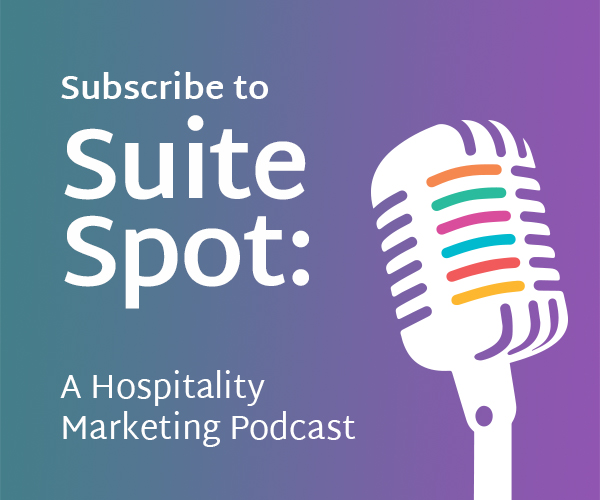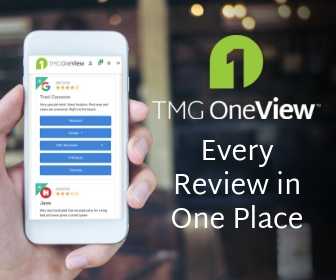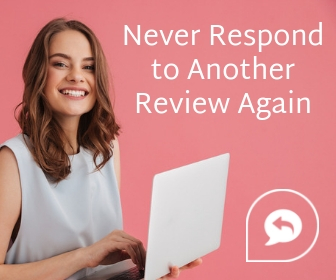23 – Diversifying Your Audience to Attract New Guests

In this episode of Suite Spot, we speak to the unbelievable prosperity that the hotel industry is currently experiencing while preparing hoteliers for a time where revenue growth might slow. Host Ryan Embree teams up with Director of Marketing Anne Sandoval to brainstorm ideas and ways to reach new guest segments to insulate your revenue from an economic slowdown.
Ryan and Anne share advice on how to identify the best opportunities within your guest/audience portfolio and how you can capitalize on those opportunities by leveraging your property’s amenities, features, and location. They also look at cost-effective ways to use digital platforms like social media and review sites to target the ideal market segment for your hotel.
If you are interested in receiving a digital consultation for your hotel or to submit a question for future episodes, call or text 407-984-7455.
Episode Transcript
Our podcast is produced as an audio resource. Transcripts are generated using speech recognition software and human editing and may contain errors. Before republishing quotes, we ask that you reference the audio.
Ryan Embree: Welcome to Suite Spot where hoteliers check in and we check out what’s trending in hotel marketing. I’m your host, Ryan Embree.
Ryan Embree: Thank you for listening to another episode of the Suite Spot. I’m very excited about this episode today. I think it comes at just the right time when we’re talking about diversifying the type of guests that your hotel is attracting. And we’re going to start in the, What’s News from a recently released CBRE report talking about the industry and how it’s going to be performing within the next couple of years. Now of course this is just a forecast, but like we’ve been hearing over the past couple of years, life is good right now in the hotel industry. rev par is up, you know, we had that uh, amazing streak of rev par growth and CBRE is kind of echoing that in this report stating that they found in 2019 they’re predicting a 2.5% increase in rev par with an additional 2% increase in 2020. Now, however, in 2021 they’re actually projecting a slight decline to rev par of 0.6%. So you know what I wanted to really get through and, and this is kind of what we’ve been hearing, we’ve been kind of hearing this trend of cautious optimism for hoteliers.
Ryan Embree: We’re in a, we’re in a time period right now of extreme growth of rev par growth, you know, revenues and all time high for most hoteliers, but they keep having that cautious optimism idea in our head of, you know, “this is great, but there’s going to be a point where this, this train kind of stops” and what we’re going to discuss today is really setting you up for that, right? We’re in this time period right now of a lot of revenue growth. But what happens if all of a sudden we do hit that blip, you know, whether it be in 2021 whether it be next year, this year, are you prepared for it? So we felt that it was necessary to do a episode like this. You know, right in the heart of this rev-par growth to really prepare yourself for when that, that rev par decrease might happen.
Ryan Embree: So in saying that with me, who better to talk about how to market to new guests than our own, uh, Director of Marketing at Travel Media Group Anne Sandoval. So welcome in Anne.
Anne Sandoval: Thanks for having me Ryan.
Ryan Embree: Like I said at the very beginning of this episode, very excited to kind of talk about this topic because you know, when, when I was in my past role as a digital specialist, you know, I would talk to a lot of hoteliers, you know, they would have a really great sense of where their occupancy was coming from. A majority of their occupancy. You know, I’d talked to a hotelier and they say, “listen, I’ve got about 80 to 90% of my occupancy coming from oil and gas workers” and I would always present to them that idea of, “okay, well what happens if that occupancy all of a sudden diminished or disappeared?”
Ryan Embree: You know, where, what are you doing to make sure that you’re, essentially just like your business portfolio, how are you expanding your guests portfolio and making sure you’re not depending too much on one market segment or type of guests, you know, and some of you might be out there and have leisure travelers, right? Family travelers in the summer. Well, what happens when that one summer comes and it just is raining the entire summer and that occupancy is not there? What can you do to really insulate yourself to make sure that if one of your market segments drops off, it’s really not going to completely derail your revenue and your goals for the year. So I want to go ahead and get kind of your maybe tips and or maybe a starting point for some hoteliers when it, when it comes to, “I think I have a good idea of where my guests are coming in from, but how do I get an actual idea? ”
Anne Sandoval: Yeah, so I think that most hoteliers have a really good sense of who their guests are. Like you said, when you were consulting with hotels across the country, they pretty much knew my number one guest type is a seasonal worker or a leisure traveler or a business traveler. But my recommendation is to get the actual numbers and look at the breakdown in your occupancy and figure out, uh, not just who that number one segment is, but look at your number two guest profile because I think that’s where your biggest opportunity for growth is going to lie. You know, if you are primarily serving one type of guest, you’re also attracting other guests. Even if 90% of your guests are coming from the same segment and are coming to the area for the same reason, uh, figuring out who those 10% are because they are also choosing your hotel. So there must be something about your hotel that’s already attracting them. So when we talk about diversifying they’re, your next best opportunity,
Ryan Embree: And when we talk about opportunity, we’re not just talking about market segment either. We’re also talking about the timing of when these guests are coming in, right? So, you know, if you see that you’re getting obviously a lot of leisure travelers on the weekends, you know, what are you doing to diversify your type of guests that are coming in for the weekdays, which might, you know, and, depending on what market you’re in, might represent a lot of business people. So, you know, looking for those opportunities, don’t just look at it as a, as a type of guests, but look of it more as the timing of that guest. So weekdays, um, are you seeing a lot of occupancy in the summer and you need to find that area of opportunity in the winter and figure out ways to kind of attract travelers there. Um, another one would be finding opportunities within the amenities or features of your property. Um, can you speak a little bit to that, Anne?
Anne Sandoval: Yeah, absolutely. So I think every hotel has some wonderful key selling points and you don’t have to be a, you know, a boutique property or a really high end property to have amenities that attract very specific types of guests. You want to really take a look at what your current guests really love about your hotel. Think about the most positive feedback you’ve received at the front desk during checkout has been recently. And really you just listened to your existing guests. Do they love, uh, you’re free breakfast? Do they love your Wifi or Your Business Center? Do they love the way you’ve updated your fitness area? And when you figure out what the key selling points are, then you can figure out, well what type of guests do these most benefit? So if you have a really up-to-date business center, um, that is better than the competitors in your market, but your number one occupancy guest is not a business traveler, then that can show that you have a lot of opportunity to grow in that area simply by promoting what’s already great about your hotel.
Ryan Embree: And we’re going to give several examples of that of, of how you can sort of leverage those amenities to attract the type of guests that you’re looking for. Um, I think another good point to kind of piggy back that is also your room mix. For example, if you have a lot of two bedrooms style rooms for your property, that’s going to be more attractive to the family and leisure traveler than it might be to a business person. So utilize that, figure out what your room mix is, figure out who’s staying in those rooms, whether they’re doing it on purpose or not. Sometimes, uh, you know, travelers are just looking for the best value. So there might be a price difference between the two, but start to look for patterns and trends because if you can identify those, those are also opportunities to again, maybe leverage those types of rooms to the travelers that you’re looking to attract.
Anne Sandoval: Yeah, and I think we would be remiss if we didn’t mention also that the room makes, can play a big part in attracting groups. Uh, you know, if you have a lot of double bedrooms all on the same floor, then that could be really attractive to a sports team or a church group or, you know, another larger group coming into town. And of course you don’t want to forget about your event space. If you have even a single well-appointed conference room could be a determining factor for even local businesses holding you know, important meetings at your property.
Ryan Embree: Absolutely. That’s a great point. And the last opportunity that we would really want to look at is really your location. So every single hotel that’s you know, listening to this podcast right now is in a different location and can leverage that differently. The events that are near there if you’re near an airport attractions even near a major interstate and highway. Um, so look for opportunities there again for you know, if you are near the highway knowing that certain travelers are traveling from one destination to the other and you represent a good midway point, that is some vital information to know when you’re trying to market and maybe fill up your rooms on the weekdays or weekends, to those travelers that might be going from town to town if you’re near a specific attraction.
Ryan Embree: And you said it groups is a great way and a quick way to really have an impact on revenue. If your hotel is near a sports complex, leverage that and make sure travelers know about that. And again, if you’re fitting it into the type of segment and type of traveler that you’re looking for, that’s, that’s just building that guest portfolio that we’re talking about.
Anne Sandoval: The last thing that you really want to consider and when you’re in this planning and kind of brainstorming stage of diversifying your audience is really to determine what resources you have, not just your budget to do potential renovations or advertising, but who on your existing staff could really help you with this project and what vendors are you already partnering with that may have some expertise in this area. So figuring out exactly all the resources you have that might help you address this problem of diversifying your portfolio
Ryan Embree: And that, and that’s what leads us to our kind of a next point, what we’re going to get into because we understand that hotels and hoteliers all have different budgets and they might have these ideas of, I know that I need to to increase my leisure traveler because I relied too heavily on corporate business.
Ryan Embree: Um, but I don’t have the budget to go out there and do some of the things that these other hotels do. So what we’re going to do today is kind of talk through some creative ways that we consult with our hoteliers and partners that we work with on how to utilize the digital side that are very cost effective, but also very effective in diversifying a hotelier’s portfolio. So let’s first kind of start with social media, which again, you know we’ve, we’ve at Travel Media Group have just had some incredible updates with our programs, but what type of things can hoteliers do on social media to diversify that guest portfolio and reach out to to the type of travelers that they’re, that they think they have opportunity in?
Anne Sandoval: Yeah. Honestly, I think social media is really the number one place that you should be going to really help diversify what type of guests you’re attracting to your hotel. The benefits are incredible because it’s very inexpensive to get started. It’s something that if you have the time and a little bit of tech savvyness, you can do it yourself at the property and just by posting some of the things that we just talked about, if you just create some posts that really highlight the amenities that would attract that traveler, that’s your number two opportunity for increasing your occupancy with those travelers by creating posts that market your amenities that appeal to them. It’s a really quick way to change the public perception of your hotel and just really generate some overall branding and awareness for your property.
Ryan Embree: And kind of what you said at the beginning of this, which was, you know, getting the actual numbers of your occupancy. I challenge, you know, the hoteliers are listening to this. If you are active on, on social media, social media does a great job of getting some really in depth analytics of your following. Compare those actual numbers of your occupancy, compare them and what maybe what your thoughts are of the type of traveler that your hotel attracts. Compare that to the data and analytics that Facebook and Instagram and even Twitter might have for your following and see if those match up. You might find within that, that there are opportunities. If you have a huge following from leisure travelers, then they’re looking for your hotel for content on your pages to attract them, to inspire them. They, they, they’re following your, your page for a reason. Utilize and leverage that data because you have so much of it now and even targeting your ad spend, right? We help our hoteliers with ad spend through Facebook to really target the type of traveler that they’re looking for. Um, but put a strategy together because that’s the type of thing that moved the needle. You can increase your following and you know, ultimately get that booking from the type of traveler you’re looking for.
Anne Sandoval: Yeah. One of the great things about Facebook and Instagram advertising is that if you identify that your existing followers are the type of guests that you want to attract, you can use your ad budget to increase exposure to your existing followers. Or you can use the ad spend to reach out to people who don’t currently follow you or are friends of people who follow you. One of the nice things about the targeting features is that it really creates opportunities to make the most of what we talked about earlier. So for example, if you were a highway hotel, that is a great way point between two major cities on a major interstate. You could actually target your ads to people in those major cities who indicate that they enjoy going on road trips. I mean that’s the type of thing that social media affords you the opportunity to do. The data and the targeting ability is really incredible. And one thing that we’re excited about here on Travel Media Group is that while Facebook ads are incredibly effective, Instagram marketing is even more so. So Instagram is a great new opportunity for hotels to really get out there and get new guests looking at your property.
Ryan Embree: It’s really incredible as you mentioned, the type of the type of data and the type of targeting that you can do on social media. And I feel like business owners sometimes only kind of know the surface level of what you can do with that. So hearing some of that, you can really, really get down to a granular level with some of your targeting to make sure that the revenue you’re spending in ad spend is not something where you just feel like you’re kind of throwing it, a wide net out there and just kind of hoping you get something you can really kind of target, uh, what you’re looking for. And I think a great way you know, to utilize and leverage social media is also to put the type of reviews of travelers that you’re looking to attract. So, you know, if you’re looking to get a, uh, more leisure travelers, more families to your, your hotel, find a review on one of your sites where a family has written something really nice about your hotel, all the amenities that they like, breakfast, food for the whole family, the pool, the children really enjoyed the pool.
Ryan Embree: You know, we get so much feedback as hoteliers now, we get more feedback than ever. Find a review like that and post that on your social media because then that’ll get people starting to think. Okay, maybe this is a good hotel for families to stay at. This family seemed to enjoy it. So I think that’s a really good transition into reputation management. So again, utilizing those reviews that we’re getting to attract the type of travelers that are reading that review in a sense.
Anne Sandoval: Absolutely. So if you know that your Opportunity Area lies in the leisure travelers that are coming to your hotel, let your front desk staff know that these are the guests that we really want leaving reviews for us. Say, make it a regular part of their day to make sure that those guests had a great experience and then request that they leave a five star review on TripAdvisor or Google or through the third party that they booked with. This is an opportunity for you to show future travelers the type of experience that they could have at your property.
Ryan Embree: Yeah, the type of experience that they can expect from your property. And that is, that is a way to start growing a type of guest segment or market segment at your hotel. Uh, another thing that we do at Travel Media Group but I think is also a best practice that I know you’ve heard me talk about is responding to reviews but also responding to reviews with intent. And what I mean by that is again, finding those reviews that really address some of the maybe amenities, location, the things that are attractive to your hoteliers for the type of guests that you’re trying to attract. So what I mean is if a businessman comes to your hotel, stays at your property and you’re looking to attract more business travelers, they write a positive review, which mentions the great wifi strength or signal at your hotel.
Ryan Embree: This is an opportunity for you in the response to really market your hotel and talk about how often business travelers will comment on your strong wifi signal. So you’re responding to that traveler, but you’re also almost telling future travelers that are reading that is that we cater to these business people, business travelers pick our hotel because we have such a strong wifi signal or what Anne mentioned before because our business center is newly renovated and you know the new computers we have in there and it’s kind of a quiet space for you to work or meeting rooms. So there’s ways to respond to the traveler. Yes. But also to market your hotel and what we call that. Again, it’s called responding to reviews with intent.
Anne Sandoval: Reviews really offer another opportunity for hoteliers to make really smart decisions at their property, if you identified in the earlier stages that you have some resources available to make major or minor updates at the property, then paying attention to what travelers are saying in your online reviews is really the ideal way to determine where that money can give you the most bang for your buck. So using sentiment analysis, something that’s part of our Reputation Review Response program at Travel Media Group or even taking the time at the property to read through your reviews and identify when there are negative reviews about my property. What are those travelers saying? What are the main sticking points that are keeping my existing travelers from having the best experience and coming up with a plan to use those resources to either implement additional training or make updates to those amenities. Because you know, that is what’s keeping other travelers from choosing your property.
Ryan Embree: We talk about it all the time. Travelers are constantly giving hoteliers a blueprint every day on what they can improve on, what’s keeping guests coming back to the property and what’s keeping guests from not coming back to the property. And you know, having that mindset of going into a review and reading that and say, you know, seeing that five-star review and saying, “what can I do even with a five-star review, what can I do to market this? You know, the sentiment that, that my traveler is sharing with other travelers so that it can attract more or what can I do to fix what this traveler has shared with me to make sure that I’m not losing more business because of that.”
Ryan Embree: And again, we, we go even more in depth when we’re talking about the type of traveler business versus leisure versus corporate versus um, you know, workers for the hotel. There’s so much opportunity out there and you really want to be, you’re not completely relying on one type of guests to fill up your rooms. And the last thing we’re going to look at is, is really your listings websites or web pages for your property. Making sure obviously that those are up to date with your pictures. I think that one’s self explanatory, but again, also tailoring it towards a type of guests. Maybe adding some pictures of amenities that business travelers are going to like, you know, the meeting rooms that you have, you know, talk about the spacious meeting rooms, the quiet meeting rooms, using verbiage in your listings on your website, on your web page. These are the types of things that travelers are looking for when they do their research.
Ryan Embree: But again, if you tailor it towards a type of type of guest that might be more attractive to them than maybe just seeing a picture of a business center.
Anne Sandoval: Absolutely. And I think most of the hoteliers that are listening now probably already do have, you know, a general list of their amenities on their website or their brand web page. A recommendation we can make is, the more specific you can be the better. Especially when you have someone who is maybe planning an event or trying to make a decision for our group. If you can be specific about how many rooms with double beds you have versus how many rooms with king beds you have at the property. If you can actually offer the dimensions of your meeting space or what type of AV equipment or how many people can say at your conference table. Those are things, little details that will make it easier for travelers and group planners who are in that decision making process.
Ryan Embree: That’s a great idea. And also, you know, maybe having, you know, the type of events that your hotel or meeting rooms or these other places where you can get revenue for your property have held. And having that on your website. I think for travelers it gives you credibility as a hotel but also gives the travelers that the peace of mind knowing that, “hey, I’m not the first one to throw a birthday party here. These guys are experts in throwing a birthday party. This is the event space that they have and they know what they’re doing.” So I think mentioning those on your web pages, listings are also beneficial because again, travelers, they’re savvy now. They know how to do their research and they know what they’re looking for. So it could be that difference between you or your competitor and you having the experience of you know, those details and those fine, those fine tuned details that you mentioned Anne, it could be the difference between them booking with you and another hotel.
Anne Sandoval: I think another big opportunity on the website side of things is to be able to diversify the guests that you’re bringing in. You should also try to diversify what type of packages you offer. If you’re looking to attract more couples. Um, then I think that there are some great, you know, romance packages that you can offer if you’re looking to attract families, then offer packages that partner with your local attractions or for corporate, even if you don’t offer a shuttle, think about including transport to-and-from the airport as part of their hotel package.
Ryan Embree: Those are great ideas and you know, we honestly, we, we have a passion for talking to hotels about the way that they can. You know, there’s always opportunity for more revenue out there and these are just some of the ideas that we share with our hoteliers when we have consultations with them. Every single hotel is different. So if you would like to get in touch with us to have a consultation like this, talk about how you can really diversify your guests audience. If you see an opportunity out there and you have that goal, but you might not know, you know, how to get there. That’s our specialty. That’s where our expertise comes in at Travel Media Group. So, um, if you would like to reach out to us or if you have any questions you’d like answered on air off air, contact us on our, on our line (407) 984-7455. I’ll open it up to you and if you have any final thoughts before we sign off.
Anne Sandoval: You know, we’ve really just given you a taste of what’s possible when it comes to diversifying your marketing and we recognize and Travel Media Group that every hotel in every market has a unique situation and a unique opportunity to improve your guest profile, your occupancy and your revenue, and that’s really what we specialize in at Travel Media Group. So really a conversation with us, that’s something that you can just take a few minutes to have and it could make a difference and our experts are available to do that.
Ryan Embree: Absolutely. Well thank you again Anne for joining me today. We hope you enjoyed this episode of the Suite Spot, and we will see you next time.
Ryan Embree: To join our loyalty program, be sure to subscribe and give us a five-star rating on iTunes. Suite Spot is produced by Travel Media Group. Our editor is Anne Sandoval with cover art by Bary Gordon and content support by Priscilla Osorio. I’m your host, Ryan Embree, and we hope you enjoyed your stay.





0 Comments